How the 2025 U.S. Tariff Increase Affects Our Bag & Backpack Manufacturing Business
分享

This year, one of the biggest challenges we’ve faced as a Chinese OEM/ODM bag & backpack manufacturer has come from outside the factory: rising tariffs imposed by the United States on Chinese imports.
Among our long-term clients is a major Amazon seller based in Texas (name withheld for privacy). About 80% of the bags & backpacks they sell on Amazon are produced in our RANGE factory under OEM agreements. For years, we've maintained a stable schedule: shipping a full 40-foot container to them every two months, based on well-planned advance orders.
But in early 2025, everything changed.
The Tariff Spike
In March, our client reached out to discuss the possibility of a 10% price reduction on all items. This wasn’t unexpected, given that U.S. tariffs on many categories of Chinese-made goods began to climb dramatically.
Originally at 10%-20%, tariffs soon surged to 54%... then 104%... and finally 125%.
It became clear to both sides that blindly negotiating price reductions was not realistic or sustainable. A smarter approach was needed.
Our Proposed Solutions
To protect our client’s profitability and ensure continuity of business, we worked out a three-part response plan together with our logistics partners:
1. Consolidated Container Shipping (Mixed Cargo Strategy)
Instead of delivering full containers each time, we began using LCL (Less-than-Container Load) shipments by consolidating mixed goods from other clients or categories. Our logistics provider customized shipping combinations based on cargo value, helping to minimize tariff exposure per shipment.
2. Staggered Shipping Schedules
We switched from bulk container orders to multiple smaller, scheduled shipments. This gave the client more flexibility with their inbound logistics and helped them stay agile with their Amazon FBA inventory planning.
3. Adjusted MOQs and Production Planning
To support cash flow and reduce overstock risk, we offered a lower minimum order quantity (MOQ) model. This helped the client adapt their purchasing strategy without sacrificing product availability.
Positive Results (So Far)
Our latest shipment, delivered on April 30, was completed under this new plan. According to the client, the average shipping cost increased by about 8%, but this was still within their acceptable range.
Their biggest concern now? Avoiding stockouts on Amazon. Their products remain in high demand, and timely warehouse delivery is critical.
We continue to monitor the situation closely, adapting our production and logistics strategy together with our clients to overcome these unpredictable global policy changes.
At RANGE, we don’t just manufacture bags & backpacks — we help clients navigate international complexity with reliable, flexible solutions.
